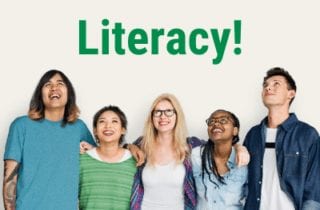Presented by Eugenia Mora-Flores, Ed.D., Assistant Dean of Teacher Education and Professor of Clinical Education, Rossier School of Education at the University of Southern California
Presented by Erica King, Former Early Childhood Educator, Current Senior Content Development Manager, Hatch Early Learning
Presented by Claudia Castillo-Magallanez, Professional Learning Bilingual Specialist, Frog Street
In this edWebinar, join literacy expert and coach Shaelynn Farnsworth with panel members Emily Francis, North Carolina ESL Teacher, and Brett Gosselin, District Facilitator for Sheltered Instruction in Texas, as they discuss the most current principles and practices to meet the needs of our ELL students.
A variety of online tools embedded in popular Microsoft programs and apps are now helping English Learners with reading, writing, and classroom conversations. And, these same tools are also enabling parent-teacher conferences to become bilingual or even multilingual.
The goal of this edWebinar is to provide participants with techniques, strategies, and practical ideas about how to improve their English language learners’ (ELL) pronunciation using pedagogical tools that enhance natural English stress, intonation and rhythm in connected speech.
There’s no secret formula for parent engagement. And when English isn’t their first language, the obstacles seem more daunting. According to Rick Castaneda, a training specialist at Rosetta Stone, the key is to develop a multi-step approach that gives parents several different opportunities to connect with the school and their children’s teachers while also making sure that the parent, no matter their language, feels like a key part of the decision-making process. In his edWebinar, “Involve Parents for Greater English Learner Success,” Castaneda discussed six key areas of parental involvement, based on the work of Johns Hopkins professor Joyce L. Epstein, PhD, and how each one helps build a stronger relationship.
This edWebinar will focus on the basics of second language acquisition, exploring the theories of Chomsky and Krashen, including learner differences and development.
It’s almost impossible to ignore that K-12 classrooms in the U.S. are filled with students from increasingly diverse cultural backgrounds: race, nationality, religion, economic, etc. Many teachers, though, still aren’t sure how to move from recognizing the diversity to creating a mutually responsive learning environment. In his presentation, “Culturally Responsive Teaching: Key Principles and Practices,” Dr. Ken Springer, Professor of Education and Chair of the Department of Teaching and Learning at Southern Methodist University, explained why teachers should view diversity as an opportunity and what questions to ask to ensure they’re building a culturally inclusive classroom.
This edWebinar will provide a well-rounded perspective of how young children are building language, physical, cognitive, social-emotional, and motor development skills.











